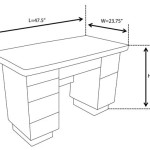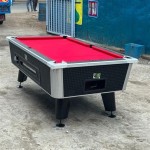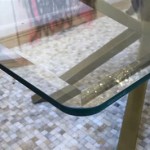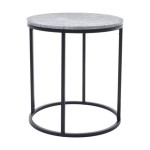How To Clean Marble Table Top Water Stains
Marble, a metamorphic rock prized for its elegant veining and smooth texture, has been a coveted material for tabletops for centuries. Its inherent beauty elevates the aesthetic of any space. However, marble's porous nature renders it susceptible to staining, particularly from water. Water rings and spots, often unsightly and detracting from the marble's inherent luster, are a common problem for owners of marble tabletops. These stains, if left untreated, can become deeply ingrained and difficult to remove. Therefore, understanding the causes of water stains and employing effective cleaning methods is crucial for maintaining the pristine condition of a marble tabletop.
The formation of water stains on marble is primarily due to the mineral composition of the stone. Marble is primarily composed of calcium carbonate, a mineral that is readily susceptible to etching and staining from acidic substances, including water. While seemingly innocuous, tap water often contains dissolved minerals, such as calcium and magnesium, which can leave behind a residue upon evaporation. This residue accumulates on the surface, creating the visible rings or spots that are commonly referred to as water stains. Furthermore, the porous nature of marble allows water to penetrate its surface, leading to deeper staining and potentially weakening the stone over time. The severity of the water stain depends on several factors, including the mineral content of the water, the duration of exposure, and the type of sealant, if any, applied to the marble.
Preventing water stains is often more effective than attempting to remove them. Implementing preventative measures can significantly reduce the likelihood of water damage and maintain the marble's beauty for years to come. One of the most effective preventive measures is the consistent use of coasters and placemats. These barriers create a physical shield between the water source and the marble surface, preventing direct contact and minimizing the potential for staining. Additionally, promptly wiping up any spills, especially water or other liquids, is crucial. The longer a liquid sits on the marble, the greater the chance it has to penetrate the surface and cause a stain. Regularly dusting the marble tabletop with a soft cloth will also help remove loose particles and prevent them from becoming embedded in the surface.
Another important aspect of prevention is periodic sealing. Marble sealers are designed to fill the pores of the stone, creating a barrier that repels liquids and protects against staining. The frequency of sealing depends on the type of sealer used and the level of use the tabletop receives. Generally, it is recommended to reseal marble tabletops every 6-12 months. Choosing a high-quality, penetrating sealer specifically designed for marble is crucial for optimal protection. Understanding the properties of different sealers and their application methods is an important step in preventative care. Always test the sealer on an inconspicuous area of the tabletop before applying it to the entire surface.
Identifying the Type of Water Stain
Before attempting any cleaning method, it is essential to accurately identify the type of water stain present on the marble tabletop. This identification process informs the selection of the most appropriate and effective cleaning solution and technique. Water stains on marble can generally be categorized into two main types: surface stains and deep-set stains. Surface stains are typically caused by mineral deposits from water evaporation and appear as light rings or spots on the surface. These stains are often relatively easy to remove with mild cleaning solutions. Deep-set stains, on the other hand, are more challenging to address. These stains occur when water penetrates the marble's pores and leaves mineral deposits beneath the surface. Deep-set stains may appear darker and more pronounced than surface stains.
To distinguish between surface and deep-set stains, a simple test can be performed. Gently wipe the affected area with a damp cloth. If the stain disappears or fades significantly, it is likely a surface stain. If the stain remains unchanged after wiping, it is most likely a deep-set stain. Another indicator of a deep-set stain is its appearance. Deep-set stains often have a slightly etched or dull appearance compared to the surrounding marble surface. This etching occurs when acidic water interacts with the calcium carbonate in the marble, causing a slight erosion of the surface. Recognizing the characteristics of each type of stain is crucial for selecting the appropriate cleaning approach.
Furthermore, the appearance of rings or discoloration around the water stain can provide additional clues about its nature. Discoloration may indicate that the water contained other substances, such as coffee, tea, or juice, which have contributed to the stain. These types of stains may require specialized cleaning solutions designed to remove organic compounds. Observing the color and pattern of the stain, along with the results of the damp cloth test, will help determine the best course of action for cleaning the marble tabletop. Ignoring this initial assessment could result in using the wrong cleaning method and potentially worsening the stain or damaging the marble surface.
Cleaning Surface Water Stains
Surface water stains on marble tabletops are generally the easiest to remove. A gentle approach using mild cleaning solutions is often sufficient to lift the mineral deposits and restore the marble's luster. The first step in cleaning surface water stains is to gather the necessary supplies. These supplies typically include a soft, microfiber cloth, warm water, and a pH-neutral marble cleaner. Avoid using abrasive cleaners, scouring pads, or harsh chemicals, as these can scratch or damage the marble surface. It is crucial to use a pH-neutral cleaner to prevent etching, which can occur when acidic or alkaline cleaners react with the calcium carbonate in the marble.
Begin by dampening the microfiber cloth with warm water. Gently wipe the affected area in a circular motion. Avoid applying excessive pressure, as this can also scratch the marble. If the water stain persists, apply a small amount of pH-neutral marble cleaner to the damp cloth. Again, gently wipe the affected area in a circular motion. Allow the cleaner to sit on the stain for a few minutes, but do not let it dry completely. After a few minutes, wipe the area clean with a fresh, damp cloth. Ensure that all traces of the cleaner are removed from the marble surface.
Once the surface has been cleaned, dry it thoroughly with a clean, dry microfiber cloth. Buffing the surface with a dry cloth will help restore its shine. If the water stain is still visible after the initial cleaning, repeat the process. Multiple applications may be necessary to completely remove stubborn surface stains. In some cases, a paste made from baking soda and water can be used to gently polish the marble surface. Mix baking soda and water to form a thick paste. Apply the paste to the stain and gently rub it in a circular motion. Rinse the area thoroughly with water and dry with a clean cloth. Always test any cleaning solution or paste on an inconspicuous area of the marble before applying it to the entire surface.
For particularly stubborn surface stains, a poultice made from diatomaceous earth can be used. Diatomaceous earth is a fine, powdery substance that is highly absorbent. Mix diatomaceous earth with water to form a thick paste. Apply the paste to the stain and cover it with plastic wrap. Allow the poultice to sit on the stain for 24-48 hours. The diatomaceous earth will draw the stain out of the marble. After 24-48 hours, remove the plastic wrap and scrape away the dried poultice. Rinse the area thoroughly with water and dry with a clean cloth. This method is particularly effective for removing mineral deposits and other surface contaminants.
Addressing Deep-Set Water Stains
Deep-set water stains in marble pose a more significant challenge due to their penetration into the stone's porous structure. Removing these stains requires a more intensive approach that draws the stain out from within the marble. One of the most effective methods for removing deep-set water stains is using a poultice. A poultice is a paste-like substance that is applied to the stain and allowed to dry, drawing out the stain as it dries. Several types of poultices can be used, depending on the severity of the stain and the sensitivity of the marble.
A common poultice for removing deep-set water stains is made from baking soda and hydrogen peroxide. Mix baking soda and hydrogen peroxide to form a thick paste. The consistency should be similar to that of peanut butter. Apply the paste to the water stain, covering it completely. The paste should extend beyond the edges of the stain to ensure that all affected areas are treated. Cover the poultice with plastic wrap and secure it with tape. This will prevent the paste from drying out too quickly and allow it to draw out the stain more effectively.
Allow the poultice to sit on the stain for 24-48 hours. For particularly stubborn stains, the poultice may need to sit for up to 72 hours. Regularly check the poultice to ensure that it remains moist. If it begins to dry out, dampen it with a small amount of hydrogen peroxide. After the designated time, remove the plastic wrap and scrape away the dried poultice. Rinse the area thoroughly with water and dry with a clean cloth. Examine the marble surface to determine if the stain has been removed. If the stain is still visible, repeat the process. Multiple applications may be necessary to completely remove the stain.
Another effective poultice can be made from cornstarch and water. Mix cornstarch and water to form a thick paste. Apply the paste to the water stain, cover it with plastic wrap, and allow it to sit for 24-48 hours. This poultice is particularly effective for drawing out oily or greasy stains that may be contributing to the discoloration. After removing the poultice, rinse the area thoroughly with water and dry with a clean cloth. For very deep-set stains, a commercial marble stain remover may be necessary. However, it is crucial to choose a stain remover specifically designed for marble and to follow the manufacturer's instructions carefully. Always test the stain remover on an inconspicuous area of the marble before applying it to the entire surface. If the stain persists after multiple attempts, it may be necessary to consult with a professional marble restoration specialist.

How To Get Rid Of Hard Water Stains On Marble And Granite

How To Remove Water Stains From Granite Eagle Stones Marble

How To Remove Stains And Water Marks From Marble Countertops Brownstone Cyclone

How To Remove Hard Water Stains From Marble Handmade Weekly

How To Remove Stains And Water Marks From Marble Countertops Brownstone Cyclone

How To Clean Marble Table Top

How To Remove Hard Water Stains From Granite Countertops Professional Results At Home

How To Remove Hard Water Stains From Marble Handmade Weekly

Home Blog How To Remove Water Stains From Marble Or Granite

How To Remove Stains And Etches From Marble Countertops








